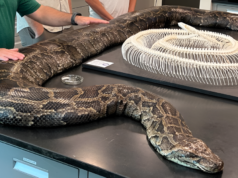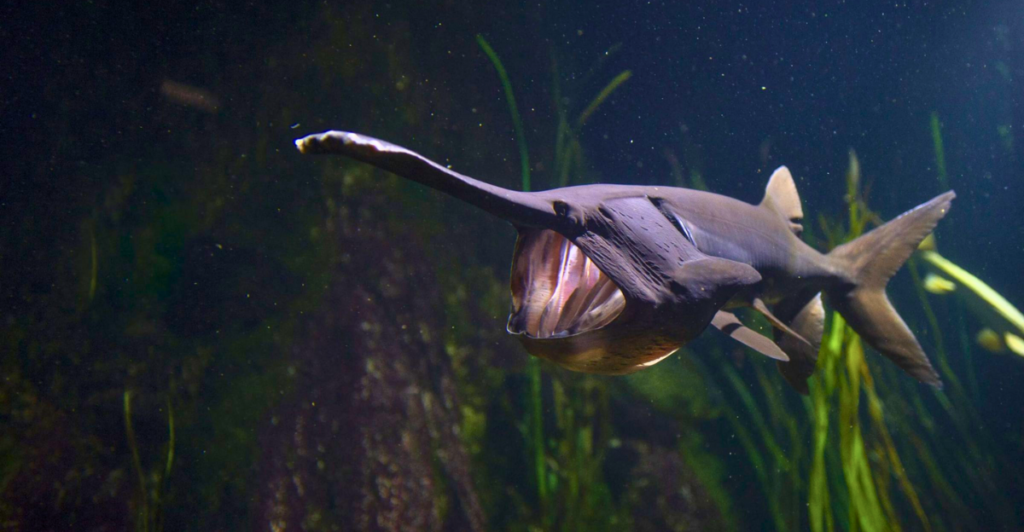
Beneath the surface of the Mississippi River lies a world teeming with life. From mysterious fish to fascinating reptiles, these creatures have adapted to the unique challenges of one of North America’s greatest rivers. This gallery will introduce you to 13 remarkable species lurking in the depths. Each offers a glimpse into the biodiversity and wonder of this iconic waterway, proving there’s more than meets the eye beneath the flowing currents.
Alligator Gar – The Living Fossil
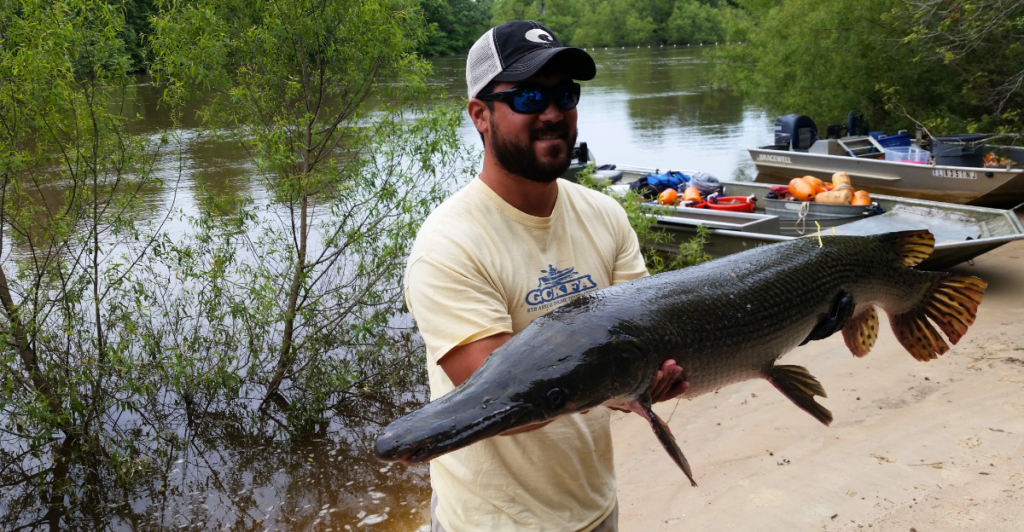
The alligator gar is one of the largest freshwater fish in North America. It resembles its reptilian namesake with a torpedo-shaped body and a mouthful of sharp teeth. These ancient fish can grow over 10 feet long and weigh up to 300 pounds. Preferring slow-moving waters, they play a crucial role in the ecosystem as opportunistic predators, helping control populations of smaller fish.
Paddlefish – The Gentle Filter-Feeder
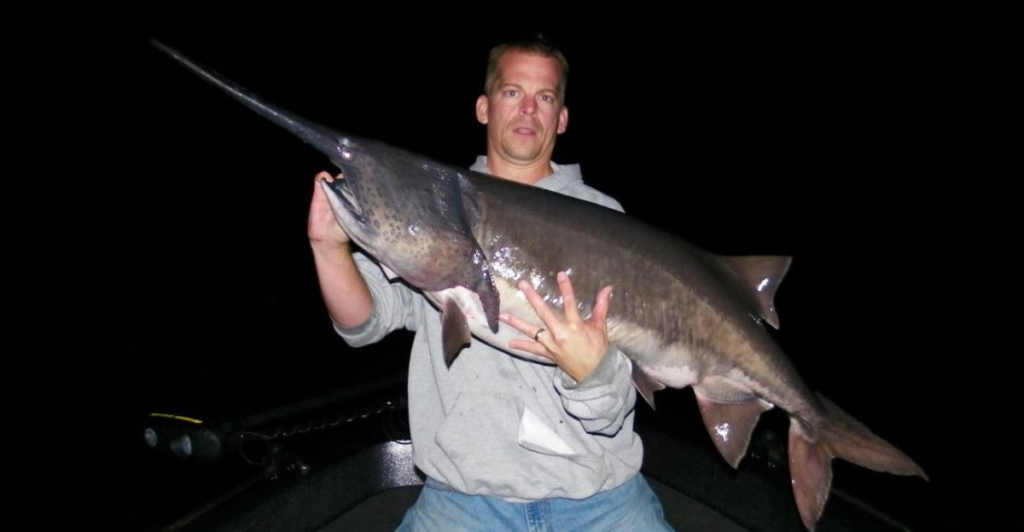
Paddlefish, named for their long, paddle-like snouts, are prehistoric fish in the Mississippi River. They feed by filtering plankton from the water using specialized gills. Paddlefish can grow up to seven feet long and weigh over 100 pounds. These fascinating creatures testify to the river’s ancient lineage, as they’ve existed relatively unchanged for millions of years.
Channel Catfish – The Whiskered Dweller
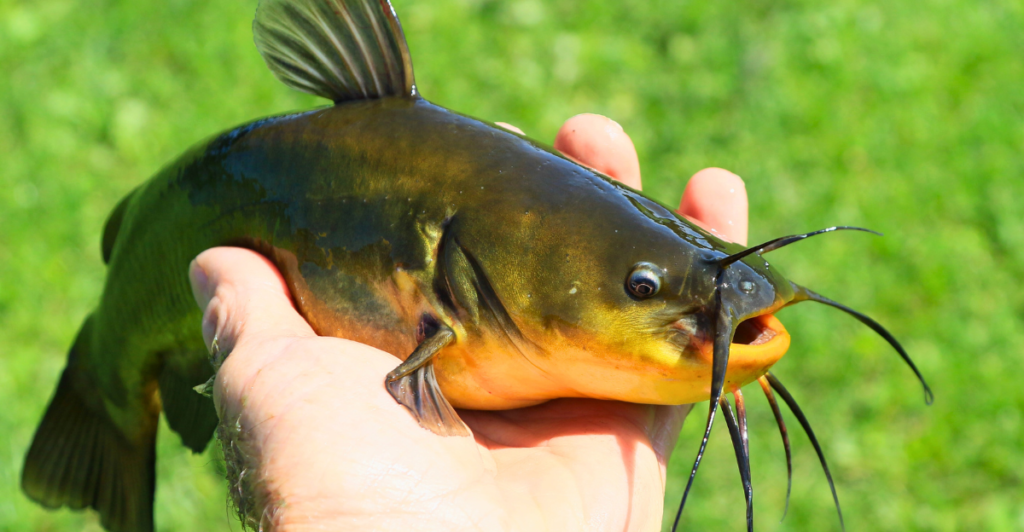
Channel catfish are a common sight in the Mississippi River. Recognizable by their whisker-like barbels, they use these sensory organs to locate food in murky waters. Growing up to 40 inches and weighing around 50 pounds, they are popular among anglers. Known for their adaptability, channel catfish thrive in various aquatic environments, contributing to the river’s biodiversity.
Blue Catfish – The Heavyweight Champion
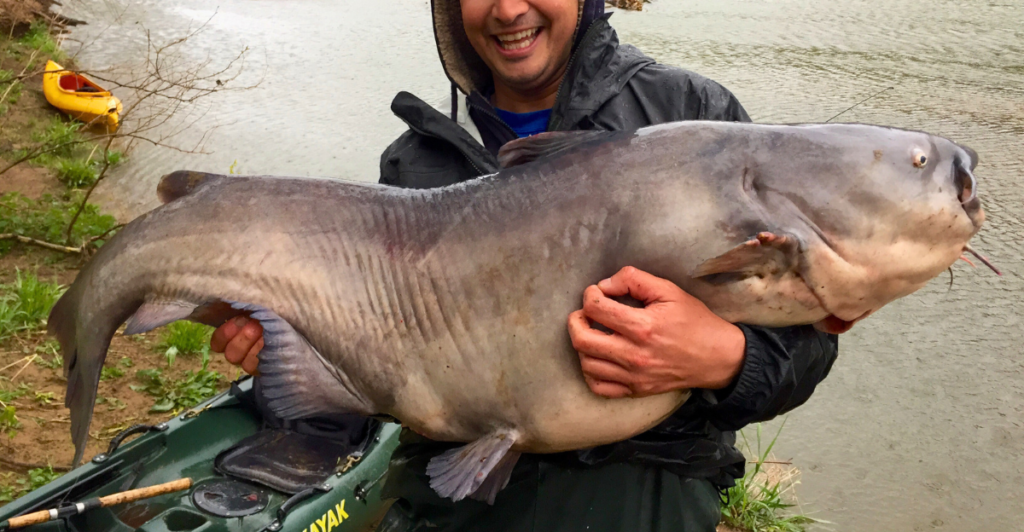
The blue catfish is the largest catfish species in North America. These giants can reach over five feet and weigh up to 150 pounds. They are apex predators Found in the Mississippi River’s deep channels, feeding on fish, crustaceans, and mollusks. Their impressive size and strength make them a favorite among sport fishers.
Freshwater Drum – The Percussionist of the Deep
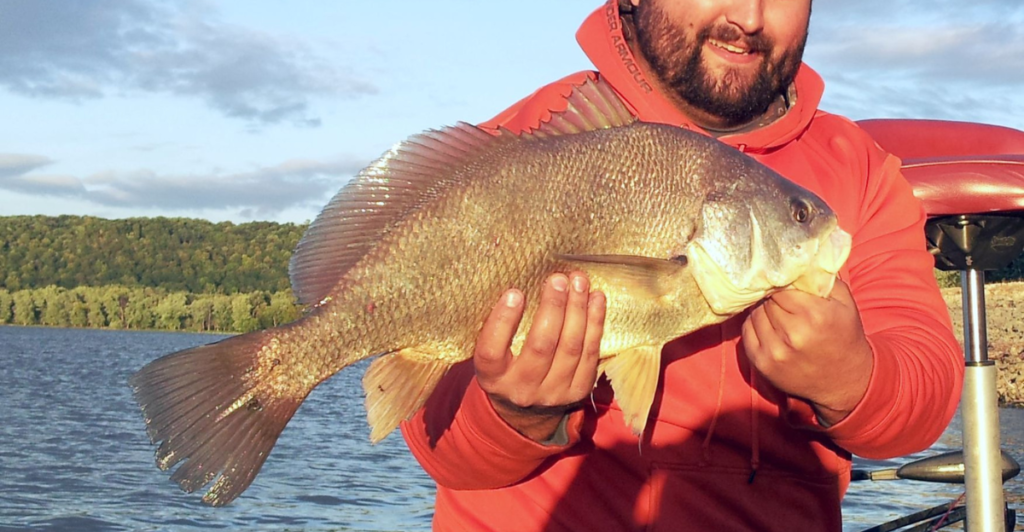
Freshwater drums, or “sheepsheads,” are known for the drumming sound they produce using muscles against their swim bladders. These bottom-dwellers can weigh up to 50 pounds and are omnivorous, feeding on insects, mollusks, and small fish. Their unique adaptation makes them an intriguing part of the river’s ecosystem.
Snapping Turtle – The River’s Ancient Guardian

Snapping turtles are formidable reptiles inhabiting the Mississippi River. Known for their powerful jaws and defensive nature, they can live for decades. These scavengers and hunters help balance the ecosystem by consuming dead fish and other organic matter. Despite their fearsome appearance, they play a vital role in maintaining river health.
Flathead Catfish – The Stealthy Predator
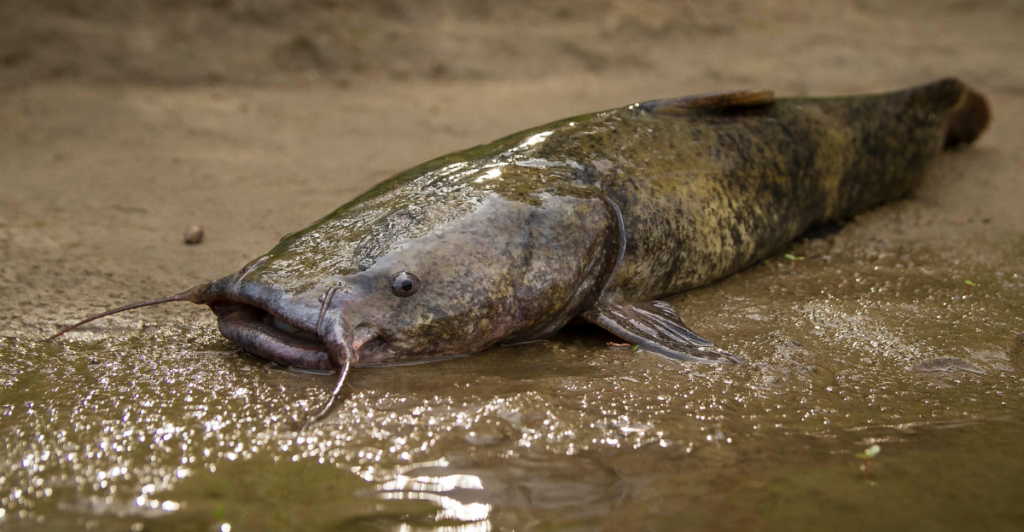
Flathead catfish are nocturnal hunters found in the Mississippi River. With a broad, flat head and mottled coloration, they blend seamlessly into the riverbed. These fish can grow over four feet long and weigh over 100 pounds. As ambush predators, they play an essential role in controlling populations of smaller fish and maintaining ecological balance.
Longnose Gar – The Streamlined Hunter
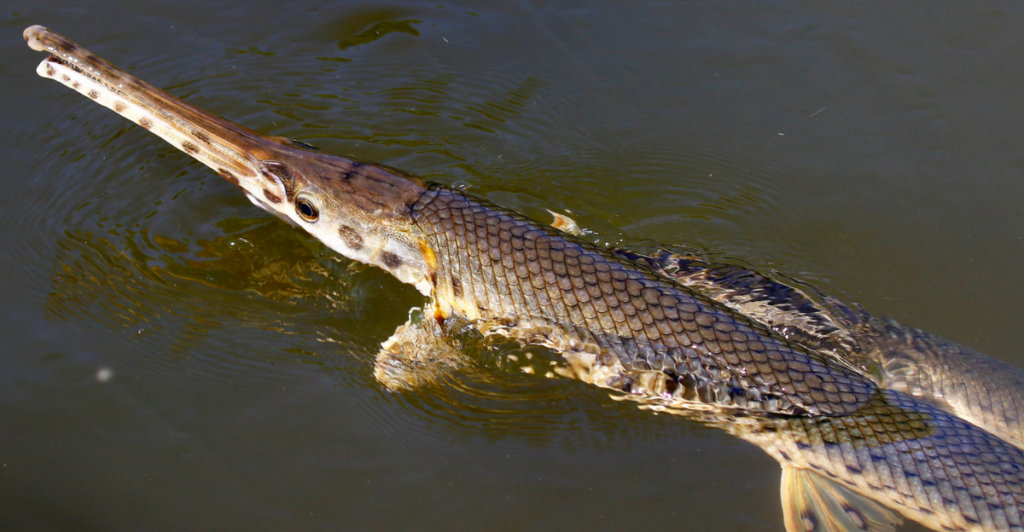
The longnose gar is a sleek, elongated fish with a needle-like snout. It is an efficient predator in the Mississippi’s backwaters and slow-moving stretches. These fish use their sharp teeth to catch smaller prey like minnows and shad. Their ability to surface for air allows them to thrive in oxygen-poor environments, a remarkable adaptation for survival.
Bowfin – The Resilient Relic
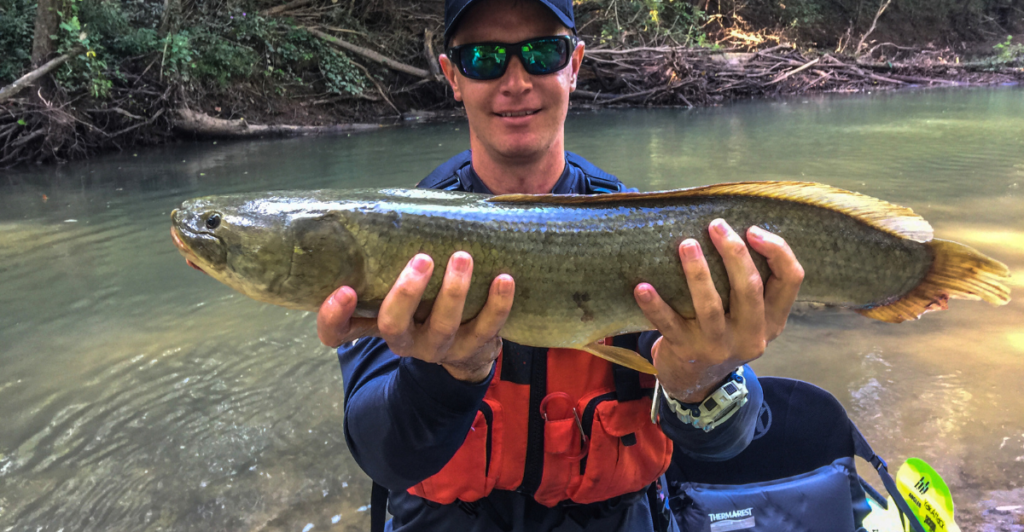
Bowfins, sometimes called “dogfish,” are hardy fish with a history dating back 150 million years. They can survive in low-oxygen waters by breathing air through their swim bladder. Bowfins are voracious predators, feeding on fish, amphibians, and insects. Their resilience and adaptability make them a fascinating river ecosystem component.
American Eel – The Migratory Mystery
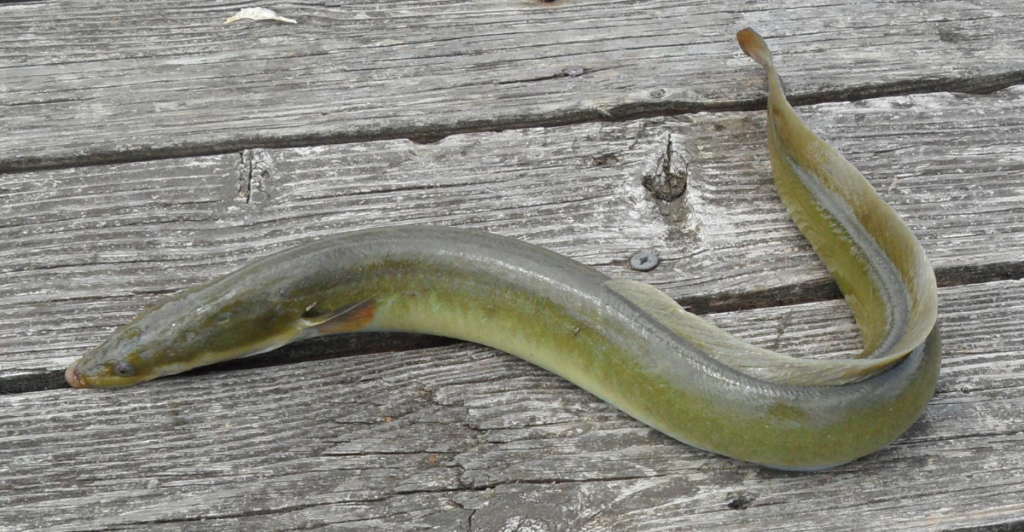
The American eel is a remarkable species known for its long-distance migration. Born in the Atlantic’s Sargasso Sea, they travel thousands of miles to rivers like the Mississippi to grow and mature. These nocturnal hunters feed on small fish and invertebrates. Their incredible journey showcases the interconnectedness of aquatic ecosystems.
Bull Shark – The Unexpected Visitor
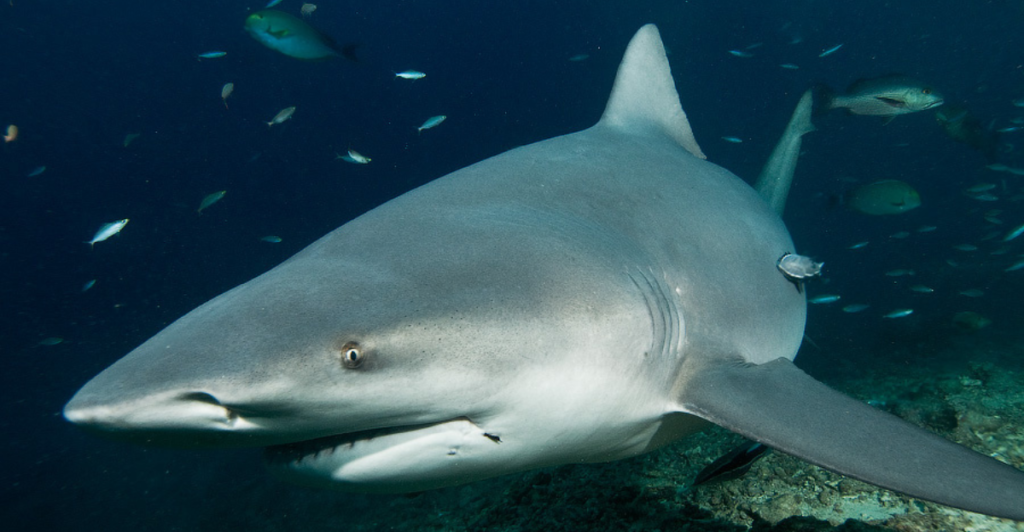
Though typically ocean dwellers, bull sharks occasionally venture into the Mississippi River. Their ability to tolerate freshwater allows them to navigate hundreds of miles upstream. These powerful predators feed on fish and other aquatic animals. While sightings are rare, their presence adds an element of intrigue to the river’s diverse ecosystem.
A Hidden World Beneath the Waves
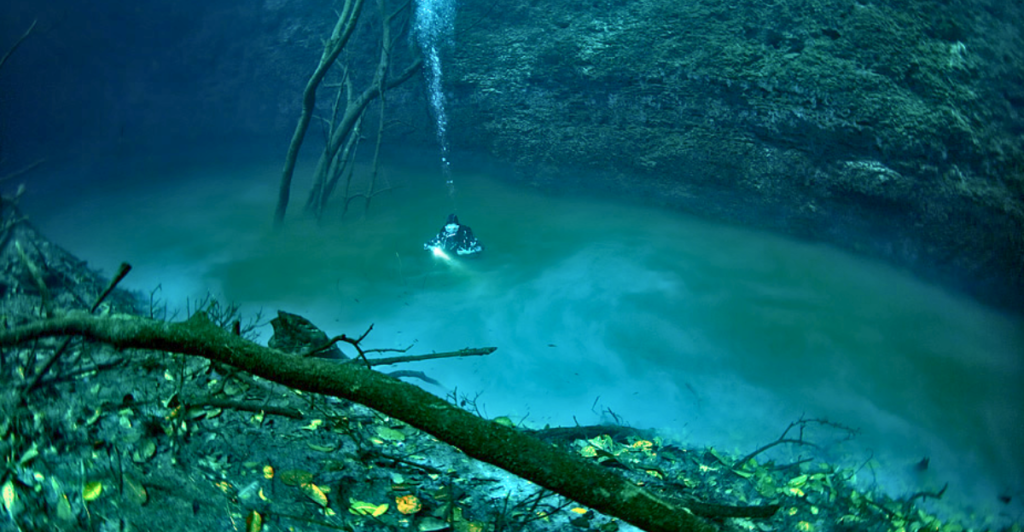
The Mississippi River’s depths are home to an incredible array of life. Each creature plays a vital role in the ecosystem, from ancient fish to modern predators. Exploring these species highlights the importance of preserving this waterway for future generations. The river’s hidden world reminds us of nature’s complexity and the wonders that await beneath the surface.
Stay connected with us for more stories like this! Follow us to get the latest updates or hit the Follow button at the top of this article, and let us know what you think by leaving your feedback below. We’d love to hear from you!
Discover more of our trending stories and follow us to keep them appearing in your feed

Meet the Massive Crocodiles That Make Their Homes 40 Feet Underground
13 Most Dangerous Animals in America
10 Aviation Disasters Caused by Bird Strikes
10 Incidents Where Animals Caused Chaos on Board and Grounded Planes
Stay connected with us for more stories like this! Follow us to get the latest updates or hit the Follow button at the top of this article, and let us know what you think by leaving your feedback below. We’d love to hear from you!


